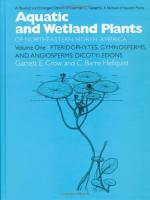|
This section contains 195 words (approx. 1 page at 300 words per page) |
A gymnosperm is a primitive type of plant characterized by the presence of naked seeds. The gymnosperms were an important group of plants during the carboniferous period, which lasted from approximately 345-280 million years ago. They coexisted and co-evolved with the dinosaurs and are now well represented in the fossil record. The gymnosperms were also responsible for the vast majority of the coal and oil deposits in the world today. While some species became extinct, the most numerous existing examples are the conifers. Other groups existed, but are represented by only a small number of species. These include the cycads, ginkgos and the gnetum group.
The gymnosperms are distinguished from the angiosperms (the flowering plants) by the unprotected ovule produced on the surface of the megasporophylls (a type of modified leaf which produces spores). The spore producing structures are usually arranged in cones. The gametophyte generation is vastly reduced and the tree form is the visible sporophyte. One limitation on the spread of this group has been its continued reliance on water for reproduction. In this situation, the male spore can only reach the female spore if it is drawn in by water.
|
This section contains 195 words (approx. 1 page at 300 words per page) |


